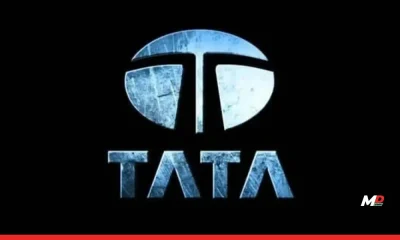Business
Cyber chaos: How a ransomware rampage crippled India’s Banking system

Picture this – you’re about to head to the ATM to withdraw some cash, but when you get there, the machine is as lifeless as a beached whale. You don’t worry though, and instead try to make a quick UPI payment, but it’s a no-go – the transaction fails miserably, leaving you in a state of financial paralysis.
Welcome to the chaotic aftermath of a massive ransomware attack that has sent shockwaves through India’s banking and payments ecosystem.
The ransomware reckoning
It all started with a sinister cyber intrusion at C-Edge Technologies, a joint venture between the State Bank of India (SBI) and Tata Consultancy Services (TCS). This technology service provider (TSP) is the backbone for hundreds of small-sized lenders, including cooperative banks and regional rural banks, across the country. And when the ransomware goblins came knocking, they didn’t just steal the keys to the digital kingdom – they held the entire system hostage.
ATM apocalypse and UPI upheaval
The impact of this cyber siege was felt far and wide, as customers of around 300 banks found themselves unable to access basic payment services. Withdrawing cash from ATMs? Nope, that’s a no-go. Making UPI transactions? Forget about it, the system is down for the count. It was a financial nightmare of epic proportions, with money deducted from accounts but never making it to the intended recipients.
The co-operative conundrum
The cooperative banks and regional rural banks that rely on C-Edge were hit the hardest, with the National Cooperative Union of India chairman Dileep Sanghani reporting that nearly 300 banks, including 17 in his home state of Gujarat, were experiencing these crippling issues. Imagine trying to run a small-town bank in the midst of this digital disaster – it’s enough to make even the most seasoned banking professionals break out in a cold sweat.
Isolating the infection
As the severity of the situation became clear, the National Payments Corporation of India (NPCI) had to take drastic action. They quickly isolated C-Edge from accessing the retail payment systems they operate, effectively cutting off the infected limb to save the rest of the body. It was a tough call, but one that had to be made to protect the larger payments ecosystem from further damage.
Restoration efforts in high gear
With the system in lockdown, the race was on to get things back up and running. Restoration work was being undertaken on a “war footing,” as the industry officials put it, with C-Edge and the relevant authorities working around the clock to address the ransomware threat and get the services restored. The goal was to have the system back in action by Thursday morning or afternoon, but as anyone who’s dealt with a cyber attack knows, these things can be unpredictable.
The broader impact
While the immediate impact was felt by the customers of the affected banks, the ripple effects of this ransomware attack could be much more far-reaching. After all, these small-sized lenders account for less than 1% of the overall payment system volume in the country. But in a country where digital payments have become the lifeblood of the economy, even a small disruption can have outsized consequences.
As the cleanup efforts continue, the industry and regulatory authorities will no doubt be taking a long, hard look at the security measures in place to protect critical financial infrastructure. This incident serves as a stark reminder that even the most robust-seeming systems can be vulnerable to the relentless onslaught of cybercriminals. Strengthening defenses, enhancing threat detection, and building resilience will be key priorities in the months and years to come.
Lessons learned
One thing is clear – this ransomware attack has exposed the fragility of India’s payments ecosystem, particularly when it comes to the smaller, more vulnerable players. It’s a wake-up call for the industry to take a hard look at its cybersecurity practices and ensure that even the smallest cogs in the machine are fortified against the ever-evolving threats.
For the cooperative banks and regional rural banks that rely on C-Edge, this crisis has shone a spotlight on the unique challenges they face. These institutions often operate with limited resources and IT expertise, making them prime targets for cybercriminals. Moving forward, there will be a pressing need to provide these smaller lenders with the tools, training, and support they need to bolster their defenses and safeguard their customers’ financial wellbeing.
As the restoration efforts continue, the industry will also need to work tirelessly to rebuild the trust and confidence of the affected customers. After all, when your money is on the line, even the slightest hiccup in the system can shake your faith. Transparent communication, swift remediation, and a steadfast commitment to strengthening security will be crucial in mending these fractured relationships.
The ransomware attack on C-Edge may have been a wake-up call, but it also presents an opportunity for the industry to reimagine and reinforce the foundations of India’s payments ecosystem. By learning from this experience, implementing robust cybersecurity measures, and ensuring the resilience of even the smallest players, the sector can emerge stronger, more secure, and better equipped to withstand threats known and unknown in the digital age.














